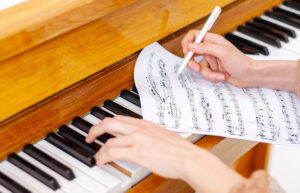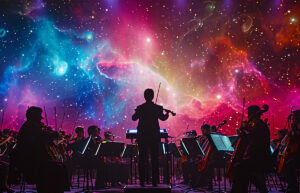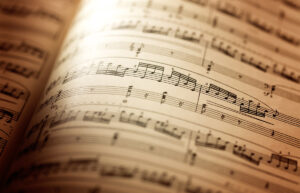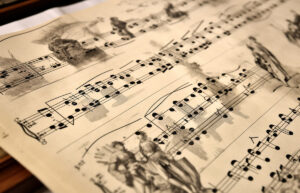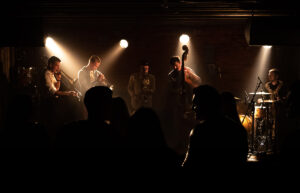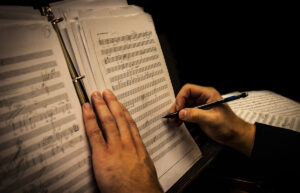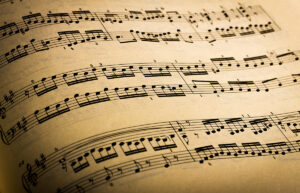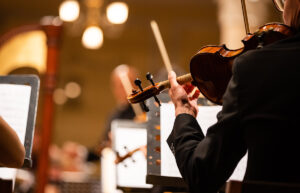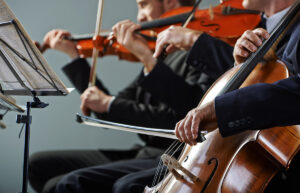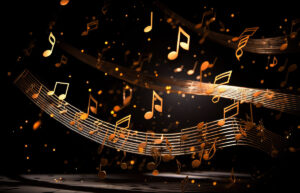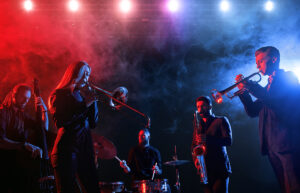What Is Folk Music: The Comprehensive Guide

We delve into what is folk music, tracing its origins, understanding its significance and impact on society, and unraveling the types, different genres, top folk songs, and best folk artists.
Buckle up for a harmonious ride through the ages as we uncover the magic of folk music.
Welcome to TheDemoStop, now join the community!
Connect with artists, fans and producers around the world.
What is folk music?
Folk music is like a musical time capsule—the music of the people, shaped by their traditions, stories, and daily lives. Folk music is a genre passed down orally from generation to generation, evolving along the way. It’s deeply rooted in a community’s culture and history, often reflecting its people’s struggles, joys, and unique identity.
Folk music can vary widely, from traditional ballads and work songs to protest tunes and contemporary expressions of the genre.
Origin and evolution of folk music
Early origins (ancient times): Folk music can be traced to ancient civilizations, where communities used simple instruments and vocals to express their culture and stories. This oral tradition lacked written documentation, relying on the transmission of tunes through generations.
Middle ages (500–1400 AD): During the Middle Ages, folk music flourished in various forms across Europe. It played a vital role in secular and religious contexts, providing a soundtrack to daily life and special occasions.
Renaissance (1400–1600 AD): The Renaissance witnessed an increased interest in preserving and documenting folk music. Composers began transcribing traditional tunes, contributing to the early stages of formal notation.
Nineteenth century: The nineteenth century marked a resurgence of interest in folk music, fueled by the Romantic movement. Collectors like Cecil Sharp and Bartók sought to preserve and catalog traditional tunes, recognizing their cultural significance.
The Folk revival: Folk music experienced a resurgence during the mid-twentieth century, especially in the United States and the United Kingdom. The folk revival of the 1950s and 60s was like a defibrillator for folk music. Artists like Woody Guthrie, Pete Seeger, and a young Bob Dylan took the genre and gave it a modern twist. They weren’t just singing about quaint villages; they used folk as a megaphone for social issues and change.
Folk fusion: As time passed, folk music didn’t stay stuck in the past. It started rubbing elbows with other genres, giving birth to folk-rock, folk-pop, and various hybrid styles. Artists like Joni Mitchell and Simon & Garfunkel blended folk with rock, adding electric guitars and pushing the boundaries of the genre.
Global folk: Folk isn’t confined by borders. Every culture has its own version of folk music, reflecting its unique history and traditions. From African griot traditions to Celtic ballads, folk takes on different flavors worldwide.
Contemporary folk (late twentieth century–present): Folk music continues to evolve. Artists like Mumford & Sons, Fleet Foxes, and indie folk acts have infused a fresh perspective to the genre, proving that folk isn’t a relic of the past—it’s a living, breathing force that continues to resonate with each passing generation.
Types of folk music
Traditional folk
This is the OG, the classic. Traditional folk music is deeply rooted in the cultural and historical traditions of a specific region or community. It’s the music that has been handed down through generations, often with acoustic instruments and simple arrangements. Think of Appalachian ballads, Irish jigs, or African tribal chants.
Country folk
Yee-haw! Country folk takes the storytelling charm of folk music and gives it a Southern twang. It’s the sound of dusty roads, cowboy boots, and heartfelt tales of love and loss. Artists like Johnny Cash and Emmylou Harris have woven the fabric of country folk into American music.
Acoustic folk
Acoustic folk is all about the pure, unadorned sound of string instruments and vocals. It’s the kind of music that feels like a cozy blanket on a chilly night. Artists such as Nick Drake and Joan Baez showcase the beauty of acoustic folk with intimate, soul-touching performances.
Ethnic folk music
Every culture has its musical story, and ethnic folk music is the vibrant tapestry of these diverse narratives. Whether it’s the haunting melodies of Indian ragas, the spirited rhythms of Afro-Cuban folk, or the intricate tunes of Middle Eastern traditions, ethnic folk music celebrates the unique sounds of different communities.
Protest folk music
Folk has a rebellious streak, and protest folk music channels that energy into social and political commentary. It’s the voice of the people standing up against injustice, war, and inequality. Woody Guthrie’s “This Land Is Your Land” and Bob Dylan’s “Blowin’ in the Wind” are timeless examples of how folk can be a powerful tool for change.
Characteristics of folk music
Acoustic instruments
Folk music relies on acoustic instruments such as guitars, banjos, fiddles, and simple percussion. Using acoustic instruments adds a raw and intimate quality to the music, connecting the listener directly to the sound.
Creation and adaptation
Folk music is born organically within communities created by everyday people rather than professional composers. It can adapt and evolve as it is passed down, reflecting the changing experiences and perspectives of each generation.
Transmission and variation
Folk music is primarily transmitted orally, from person to person, rather than through written notation. This oral transmission leads to variations in the music, with each performer adding their touch or interpretation, contributing to the richness of the folk tradition.
Welcome to TheDemoStop, now join the community!
Connect with artists, fans and producers around the world.
Compositional patterns
Folk songs often feature musically and lyrically repetitive structures, making them easy to remember and participate in. Many folk songs tell stories, often with a strong narrative structure, allowing them to convey history, folklore, or personal experiences.
Oral tradition
Unlike classical music, which relies heavily on written scores, folk music is primarily passed down through oral traditions, emphasizing memorization and direct communication.
Cultural significance
Folk music mirrors a community’s cultural identity, expressing its values, history, and shared experiences. It plays a crucial role in fostering a sense of community, providing a shared language and connection among people who identify with a particular cultural or regional heritage.
Significance of folk music
Preserve history
Folk music acts as a living archive, preserving the history, traditions, and cultural identity of communities. It’s like a musical time capsule, carrying the stories of generations.
Remember your past
Folk songs serve as a bridge to the past, allowing people to connect with their roots and understand the experiences of their ancestors. Through melodies and lyrics, folk music becomes a vessel for cultural memory, ensuring that traditions are not forgotten.
Connects people
Folk music is a communal experience, bringing people together through shared songs and traditions. It fosters a sense of unity, creating a musical thread that weaves through the fabric of a community.
Connects the generations
Folk music transcends time, serving as a bridge between generations. Grandparents can sing the same tunes to their grandchildren, creating a sense of continuity and shared heritage. It’s a way of passing down wisdom, values, and life lessons from generation to generation.
Simple and repetitive
The simplicity and repetitiveness of folk music make it accessible to everyone. You don’t need a music degree to join in; you just need a willingness to sing along or pick up an instrument. This simplicity fosters inclusivity, inviting people of all ages and musical abilities to participate in the joy of making music together.
Folk music subgenres
Indie folk
- Independent spirit: Indie folk embraces the DIY ethos, often featuring independent, self-produced artists.
- Eclectic sound: It incorporates various influences, blending traditional folk elements with modern indie sensibilities.
Traditional folk
- Roots revival: Traditional folk sticks close to its roots, drawing inspiration from the classic sounds and storytelling traditions of various cultures.
- Acoustic emphasis: Instruments like acoustic guitars, fiddles, and banjos are staples in traditional folk, creating an authentic and timeless feel.
Urban folk
- City stories: Urban folk explores folk themes in an urban setting, often addressing contemporary issues and city life.
- Diverse influences: It may incorporate elements of other genres, reflecting the diverse nature of metropolitan cities.
Anti-folk
- Subversive spirit: Anti-folk rebels against traditional folk norms, embracing an unconventional and often humorous approach to songwriting.
- DIY aesthetic: Like its indie folk cousin, anti-folk often adopts a do-it-yourself aesthetic, challenging the polished conventions of mainstream music.
Folk jazz
- Jazzy fusion: Folk jazz combines the improvisational nature of jazz with folk’s melodic simplicity.
- Instrumental exploration: Expect unique instrumental combinations and exploratory musical landscapes.
Neofolk
- Modern reinterpretation: Neofolk takes traditional folk elements and reinterprets them in a contemporary context.
- Dark undertones: Some neofolk artists infuse a darker, atmospheric quality, exploring themes that may diverge from the usual folk optimism.
Progressive folk
- Musical exploration: Progressive folk pushes the boundaries of the genre, incorporating complex compositions, diverse instrumentation, and experimental structures.
- Artistic innovation: Artists in this subgenre often seek to innovate and expand the sonic possibilities of folk music.
Political folk
- Activism through music: Political folk use music as a social and political activism platform.
- Protest Songs: Songs in this subgenre often address issues such as civil rights, war, and social justice, echoing the historical roots of protest folk.
Welcome to TheDemoStop, now join the community!
Connect with artists, fans and producers around the world.
Impact of folk music on society
Connected to your culture and heritage
Folk music acts as a sonic mirror, reflecting the unique identity of a community or culture. It provides a sense of belonging and pride. By celebrating cultural nuances and customs, folk music helps communities pass down their heritage from generation to generation.
It keeps the past alive.
Folk songs are like living history books, recounting the stories, struggles, and triumphs of those who came before us. Through music, the past remains vivid and relevant, creating a continuous thread that connects the present to its roots.
Social and political movements
Folk music has often been the people’s voice during times of social and political change. From Woody Guthrie’s guitar proclaiming “This Machine Kills Fascists” to Bob Dylan’s anthems of change, folk music has fueled and documented various social and political movements.
Folk music instruments
Voice
The human voice is arguably the oldest and most authentic folk instrument. Folk songs often rely on vocal expression, carrying the emotional and narrative core of the music.
Banjos
Banjos bring a distinctive twang to folk music. Their plucky, percussive sound is particularly associated with genres like bluegrass and Appalachian folk.
Harmonicas
The harmonica is like a pocket-sized soulful companion in folk music. Its ability to add bluesy, melodic tones makes it a versatile and expressive instrument.
Fiddle or violin
The fiddle (or violin, depending on the style) is a staple in folk music. Its expressive, melodic capabilities make it perfect for conveying the emotional depth of folk tunes.
Dobro
The dobro, or resonator guitar, adds a unique flavor to folk. Its metal resonator cone produces a distinctive, warm sound, often featured in bluesy and bluegrass folk genres.
Accordion
The squeezebox accordion adds a touch of old-world charm to folk music. Its ability to simultaneously produce melody and harmony makes it a versatile and beloved instrument.
Acoustic guitars
Acoustic guitars are the backbone of folk music. Their versatility and portability make them a go-to instrument for singer-songwriters.
Top folk music
“This Land Is Your Land” by Woody Guthrie
Woody Guthrie’s anthem has become synonymous with social and political activism. Its lyrics celebrate the beauty of the American land while addressing issues of equality and justice.
“The Sound of Silence” by Simon & Garfunkel
This haunting ballad by Simon & Garfunkel captures the spirit of the 1960s and has an enduring appeal. With their evocative imagery, the lyrics explore themes of isolation and the search for meaning.
“Freight Train” by Elizabeth Cotten
Elizabeth Cotten’s “Freight Train” is a masterpiece of fingerstyle guitar playing. The simplicity of the melody and Cotten’s delicate picking style have made it a classic in the folk canon.
Best music folk artist
Bob Dylan
- Lyrically poetic: Dylan is renowned for his poetic and socially relevant lyrics, addressing civil rights, war, and societal change.
- Voice of a generation: Often referred to as the voice of a generation, Dylan’s impact on folk and rock music is immeasurable.
- Chameleon of styles: His ability to reinvent his musical style—from acoustic folk to electric rock—showcases his versatility and innovation.
Simon & Garfunkel
- Harmonic brilliance: The duo’s intricate vocal harmonies are a hallmark of their sound, creating a melodic richness that resonates with listeners.
- Timeless songwriting: Their songs “The Sound of Silence” and “Bridge Over Troubled Water” are timeless, exploring universal themes of love, loss, and introspection.
- Cultural soundtrack: Simon & Garfunkel’s music has become a cultural soundtrack, capturing the spirit of the 1960s and beyond.
Joni Mitchell
- Innovative songwriting: Mitchell’s creative songwriting blends folk with elements of jazz, rock, and pop, creating a genre-defying and influential body of work.
- Masterful guitarist: Her skillful guitar playing, often using open tunings, contributes to her music’s unique and complex textures.
- Artistic independence: Mitchell’s independence as an artist has empowered her to explore diverse musical landscapes, earning her acclaim as a trailblazer in the folk and singer-songwriter genres.
Welcome to TheDemoStop, now join the community!
Connect with artists, fans and producers around the world.
Joan Baez
- Voice of conscience: Baez’s voice is a powerful instrument, conveying a sense of moral urgency and activism in her folk and protest songs.
- Civil rights advocate: As a prominent figure in the civil rights movement, Baez used her music as a tool for social and political change.
- Iconic interpretations: Her interpretations of traditional folk songs and collaborations with other artists have left an indelible mark on the folk music landscape.
Conclusion
Folk music definition: Folk music is a traditional genre passed down orally from one person to another.
Origins of folk music: Folk music can be traced to ancient times when communities used simple instruments and vocal expressions to narrate their stories, traditions, and daily life. It emerged organically from the shared experiences of people, reflecting the essence of their culture and heritage. These tunes were passed down orally without formal notation, evolving with each generation.
Evolution of folk music: As societies evolved, so did folk music. It adapted to changing cultural landscapes, incorporating new instruments and styles while maintaining its core storytelling nature. The migration of people and the cross-pollination of musical traditions led to diverse regional folk genres. In the modern era, folk music has found new life, with artists blending traditional elements with contemporary sounds, ensuring its continued relevance and resonance in today’s globalized world.
Types of folk music
- Traditional folk: Rooted in the cultural heritage of a specific region, passed down through generations.
- Country folk: Blending folk elements with country music
- Acoustic folk: Emphasizes unplugged and acoustic instrumentation
- Ethnic folk music: Reflects the cultural and musical traditions of specific ethnic groups
- Protest folk music: A vehicle for social and political commentary
Characteristics of the folk music
- Acoustic instruments such as guitars and fiddles emphasize simplicity and a connection to tradition.
- Creation and adaptation with songs evolving as they’re passed down through generations.
- Transmission and variation of songs by word of mouth add a unique touch to each rendition.
- Compositional patterns make it accessible and easy for a community to join in.
- Oral tradition fosters a sense of community and cultural continuity.
- Cultural significance fosters a sense of identity.
Significance of folk music
- Preserve history: Folk music preserves the traditions and stories of a community.
- Remember your past: Allows listeners to reconnect with their cultural and personal roots.
- Connect people: Folk music fosters a sense of community by providing a shared cultural experience through music.
- Connect the generations: Through oral tradition, folk music bridges the generation gap, passing down tales and tunes to ensure continuity.
- Simple and repetitive: Folk music’s structure makes it accessible and easy to participate in, encouraging communal engagement.
Folk music subgenres
- Indie folk
- Traditional folk
- Urban folk
- Anti-folk
- Folk jazz
- Neofolk
- Progressive folk
- Political folk
Welcome to TheDemoStop, now join the community!
Connect with artists, fans and producers around the world.
Impact of folk music on society
- Connected to your culture and heritage: Folk music reinforces cultural identity, creating a sense of belonging and continuity.
- It keeps the past alive: Folk music ensures that the stories and struggles of the past remain relevant and remembered.
- Social and political movements: Folk music has been a powerful tool for expressing dissent, solidarity, and aspirations in various social and political movements.
Folk music instruments
- Voice: The most elemental folk instrument.
- Banjos: A distinctive string instrument with a twangy sound.
- Harmonicas: Portable wind instruments.
- Fiddle or violin: Versatile bowed strings producing a rich sound.
- Dobro: A resonator guitar with a metallic sound.
- Accordion: Bellows-driven and lively rhythms.
- Acoustic guitars: Versatile and foundational.
Top folk music
- This Land Is Your Land
- The Sound of Silence
- Freight Train
Best music folk artist
- Bob Dylan
- Simon & Garfunkel
- Joni Mitchell
- Joan Baez
FAQs
What is folk music?
Folk music is a traditional genre originating from a particular community’s cultural expressions, usually passed down through oral traditions.
What is the history of folk music?
Folk music’s history is a tapestry woven through the ages, originating organically in communities as an oral tradition. It spans centuries, reflecting different regions’ cultural, social, and political landscapes. From ancient roots to the present day, folk music has evolved, preserving stories and traditions through its timeless melodies.
What is the most important part of folk music?
The heart and soul of folk music lie in its storytelling. Whether it’s passing down traditions, sharing personal experiences, or reflecting on societal issues, folk music is like a musical diary of the people. The simplicity of the melodies and the raw, authentic lyrics make it a timeless way to connect with our shared human experiences.
What impact did folk music have on society?
The impact of folk music on society:
- It connects you to your culture and heritage.
- It keeps the past alive.
- It helped in social and political movements.
What is the most popular instrument in folk music?
The acoustic guitar is the most popular instrument in folk music.
What instruments were most commonly used in early folk music?
The most widely used instruments in early folk music were the fiddle, banjo, mandolin, and acoustic guitar.
What are the characteristics of folk music?
- Use of acoustic instruments
- Taught through oral communication
- Created by communities and adapts with generations
- Oral transmission leads to variation in music
- Repetitive compositional patterns
- Promotes culture bonding
Why is folk music important?
Folk music is important as a cultural storyteller, preserving history, connecting communities, and serving as a timeless expression of shared human experiences.
What are the different types of folk music?
The different types of folk music are
- Indie folk
- Traditional folk
- Urban folk
- Anti-folk
- Folk jazz
- Neofolk
- Progressive folk
- Political folk
What are the instruments used for folk music?
The following instruments are used in folk music:
- Voice
- Banjos
- Harmonicas
- Fiddle or violin
- Dobro
- Accordion
- Acoustic guitars






